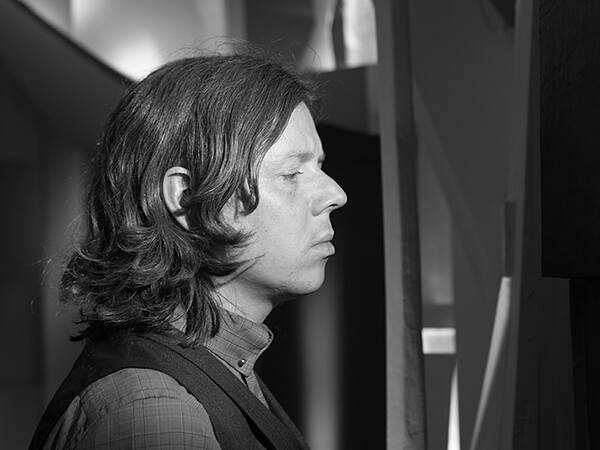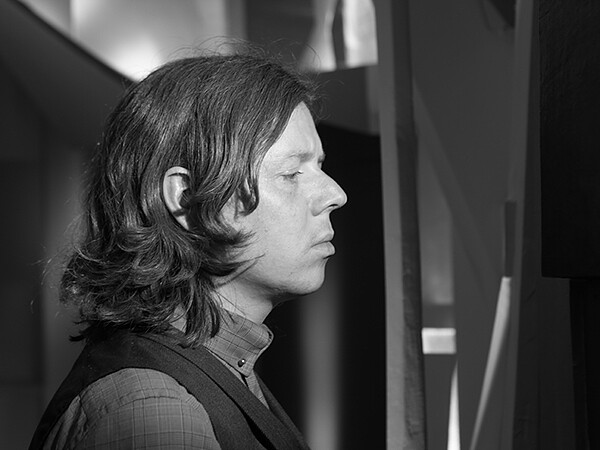In the darkened gallery, two projectors, each threaded with a black-and-white 16mm film by Joachim Koester, cast twin beams of light on two whisper thin screens sandwiched between them. The screens are suspended back to back on taut wires and seem to float in midair. The room purrs and hums moodily; the mechanical apparatuses squat there, arcane and totemic. Pushing through the heavy curtain at the entrance, you have the distinct sensation that you are interrupting a private conversation—but the films are silent. The only thing interrupted is the flow of time.
Koester’s films I myself am only a receiving apparatus (2010) and To navigate, in a genuine way, in the unknown necessitates an attitude of daring, but not one of recklessness (2009) both feature actor and poet Morten Soekilde. It’s a decision that creates the illusion of the simplest temporal and narrative links between them: first the man does this, then he does that. The former shows Soekilde in the reconstruction of Kurt Schwitters’s Merzbau (1923-1937) at the Sprengel Museum in Hannover. Koester tightly frames the warped and faceted interior, dulling sharp edges in a soft chiaroscuro that flattens the three-dimensional space into an abstract tableau punctuated with a few deep dark spots. Soekilde stands in profile, barely moving. He bobs his head, bird-like, or rather like a human antenna capturing sound or energy emanating from the site, which only he can feel. There’s a touch of madness, reminiscent of Dr. Caligari’s somnabulist, in Soekilde’s mesmerizing gesture of human reception. It’s as if he has been instructed to enact the work’s title, a quote from Schwitters.
On the flip side, Soekilde performs grander theatrical gestures against a black ground in To navigate…. His body occupies the entire frame with movements both gracefully poetic and slapstick. These are culled from the magical gestures, or “passes,” that Yaqui Indian Don Juan Matas taught anthropologist Carlos Castaneda, author of the cult The Teachings of Don Juan: A Yaqui Way of Knowledge (1968). Koester outlines the genealogy of these gestures in his own accompanying text, “Magical Passes” and mentions that Castaneda’s anthropology may have in fact been a work of fiction. But does that really matter? A suspension of disbelief is necessary for any magic to work.
The final works in the exhibition are the three silver gelatin prints, Nanking Restaurant: Tracing Opium in Calcutta (2005-08), hung in the adjacent room. These architectural ruins of the Opium trade join other voyage-related works Koester has made, such as The Kant Walks (2005), in which places are treated like palimpsests, their surfaces scratched and worked over by successive, colonizing regimes, much like histories are rewritten and altered by later generations. The close relationship between Koester’s images and the (wonderful) narratives he writes to accompany his photographs and films, as well as the slippage between documentary and fictional modes, are often cited as hallmarks of his practice. Here, the shift from moving images to still photography, from a dim space designed to conjure up mysteries to a brightly lit one that allows you to focus on the details of the Calcutta photographs, underscores the temporal dimensions of film and photography. Suddenly, Koester’s texts seem less like explanations of his work and more like an essential part of the photographic process—one that inserts itself structurally to cast away the myth of photographic immediacy in order to offer a glimpse into what images conceal.







